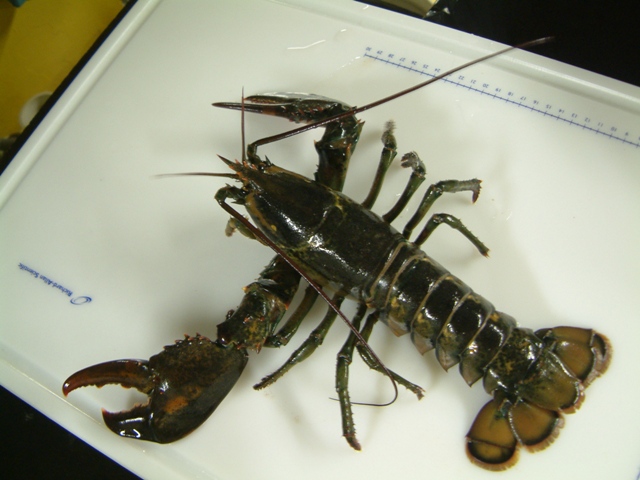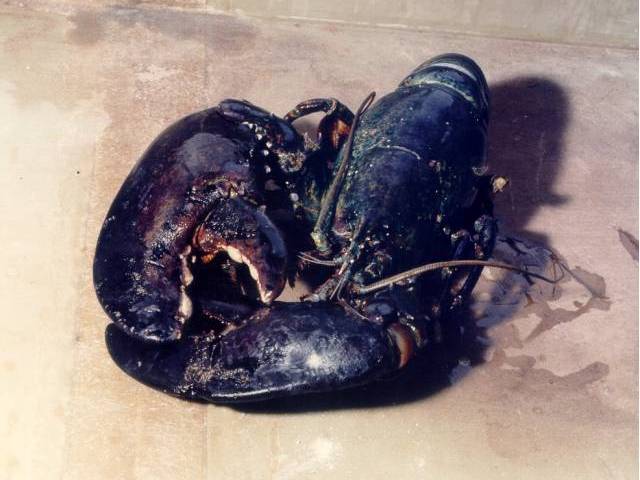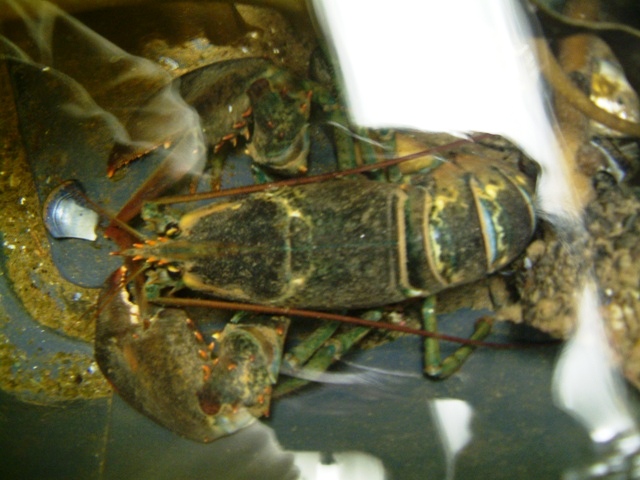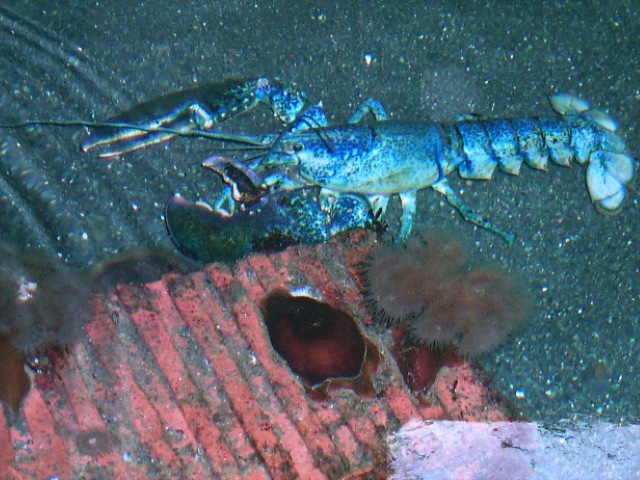American Lobster

Scientific name: Homarus americanus
Phylum: Arthropoda
Subphylum: Crustacea
Class: Malacostraca
Order: Decapoda
Description: The American Lobster has a pair of large claws and 4 pairs of legs. Its abdomen has a tail fan and it is dorso-ventrally flattened. These lobsters can reach sizes of 3ft.
Distribution: American Lobsters live strictly in a marine environment. They can be found in sub-tidal from shallow water to edge of continental shelf.
Locomotion: American Lobsters primarily move forward by flexion and extension of limbs. When a lobster is frightened or attacked by a predator is goes through a caridoid escape reaction. By rapidly contracting muscles in the abdomen region, American Lobsters shoot quickly backward, using their tail fan providing a large propulsive surface.
Food gathering: American lobsters are predators. They grasp preys with enlarged front claws followed by tearing, grinding or shearing with various mouth parts.
Gas exchange: They have gills under the carapace, which bear a series of unbranched tubular filaments.
Reproduction: The sexes are separated, with eggs being fertilized internally. Females carry eggs for 10-11 months. The growth of American lobsters is very slow. At 4 years of age they are usually between 1.5-2 lbs.
Interesting facts: One of the largest American Lobsters ever caught was about 2ft long and weighed about 42 lbs. It was caught in 1934 and was probably over 100 years old. Sometimes, blue American Lobsters are found. These lobsters have a genetic defect which makes their shell appear bluish greenish in colour.
Images
 |
 |
 |
 |
OSC Research